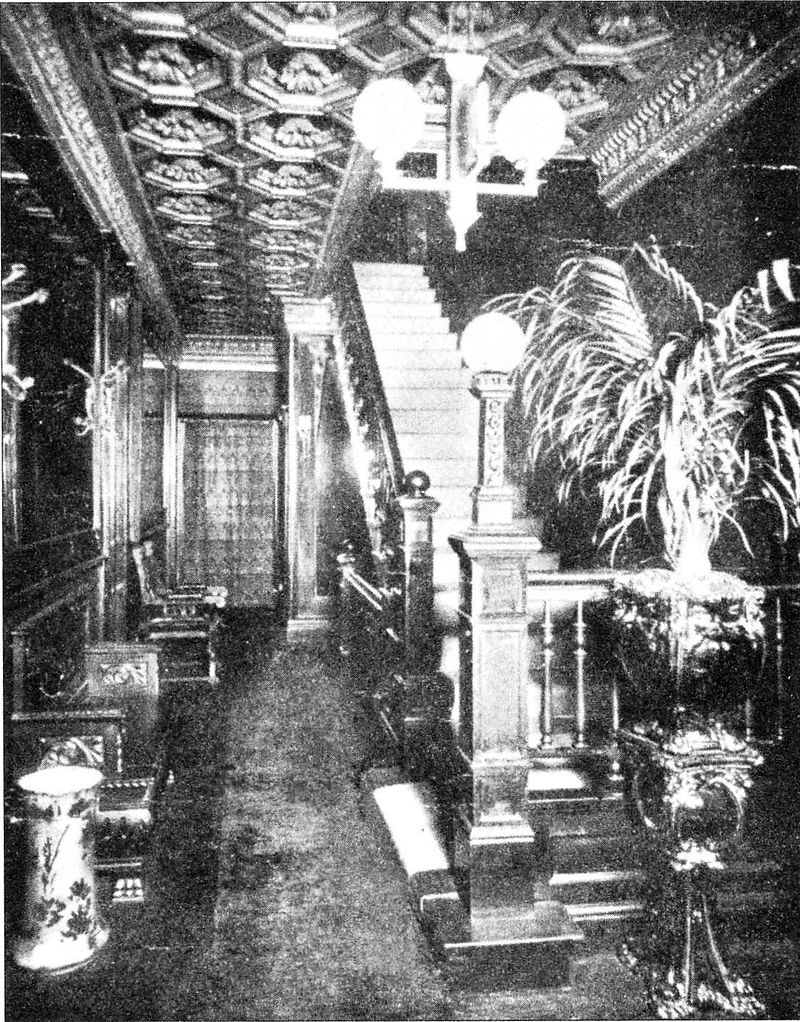By DCHS volunteer Rita Shelley
The two women who became known as the Everleigh sisters began their lives as Ada and Minna Lester (or Simms), daughters of a well-to-do Southern family. Though there are few primary sources that give any definitive facts regarding their early lives, the sisters’ legacy is more visible. They were most likely born in Virginia, Ada in 1864 and Minna in 1866. Minna died in obscurity in New York City in 1948, and Ada passed in Virginia in 1960. As adults, they changed their last name to Everleigh, reportedly taken from how their grandmother signed letters, “Everly Yours.”[1]
Ada’s and Minna’s training in the arts of elocution may have influenced their embarking upon theatrical careers. But their time as traveling actresses was brief and not particularly well documented. The most popular version of the story is that the troupe they were traveling with went broke, stranding them in Omaha in 1898. The end of their acting careers became the beginning of eventual renown as bordello operators (most famously in Chicago). But their Everleigh Club in Chicago was the second chapter. The preceding chapter was in Omaha, when the sisters found themselves in town right before the Trans-Mississippi Exposition. The story goes that Ada and Minna had heard of the plans for the exposition and sought permission to open an “entertainment center” on its grounds. Suspicious officials turned them down, claiming their attraction was nothing more than a house of ill fame. The sisters opened their house anyway, at another location.[2]

With an initial investment of $35,000, they entered a trade variously referred to in Omaha and then Chicago newspaper accounts as a “bawdy house,” “den of sin,” “bordello,” “house of sin,” “glittering palace of pleasure,” or “upscale gentlemen’s club.” During their careers and in years since, the proprietresses have been referred to as “harlots,” “naughty ladies,” “scarlet sisters,” and “the most glorious madams of all time.” The sisters officially said the $35,000 was from a family inheritance.[3] Another theory questioned whether such a “heavy purse” more likely was loaned by a local “cattle baron, meatpacker, or railroad magnate.”[4]
The Omaha brothel was at 12th and Jackson Streets. The Trans-Miss Expo returned dividends of 50 percent to its investors. In comparison, the Everleighs doubled their $35,000, ending their two years in Omaha with $70,000 to invest in Chicago toward what eventually would be a $1,000,000 fortune.[5]

The 1910 Federal Census recorded Ada and Minna as owners of a “boarding house” with 25 women in their twenties as “boarders.” The Club gained ever more fame during its eleven years: Some said the first fast trains from New York [to Chicago] were inspired by wealthy men looking to make more frequent trips to the Everleigh Club.[6]
The sisters touted their establishment as sumptuous and luxurious in an advertising brochure they published in 1911. The Chicago Sunday Tribune paraphrased the brochure:
[The Everleigh Club] is long famed for its luxurious furnishings, famous paintings and statuary, and its elaborate and artistic decorations. Fortunate, indeed, with all the comforts of life surrounding them, are the members of the Everleigh Club.[7]

But modern marketing brought about the Club’s demise. Chicago’s reform-minded Mayor Carter Harrison objected to the reflection on the city’s image as boldly flaunting prostitution. He ordered the club closed on October 24, 1911.[8]
“So bold is their operation that they issued a brochure. Circulation of their fancy pamphlet brought the closing,” the Chicago Tribune published.[9]
Ada and Minna responded to the mayor’s order by leaving for a six-month tour of Europe. With their Chicago prospects having abruptly ended, they moved to New York, where they lived in quiet comfort. After Minna’s death in New York City in 1948, Ada moved to rural Virginia, where she lived until her death in 1960 at age 93.[10]
[1] Washburn, Charles. “Onetime Most-Glamorous Madam, Ada Everleigh Dies.” Omaha World-Herald. 6 January 1960, p. 15.
[2] Omaha Press Club to Unveil Portrait of Everleigh Sisters. Historical Society of Douglas County, no date.
[3] “Ex-Omahans Introduced in Special Way Back East.” Omaha World-Herald. 10 September 1985, p. 2.
[4] Uhlarik, Carl. “The Sin Sisters Who Made Millions.” Real West. December 1968, p. 20.
[5] Ibid, p. 21.
[6] “Ada Everleigh Genius of Notorious Bawdy House.” Chicago Sunday Tribune. 31 January 1960, p. 3.
[7] Ibid.
[8] Ibid.
[9] Ibid.
[10] Ibid.